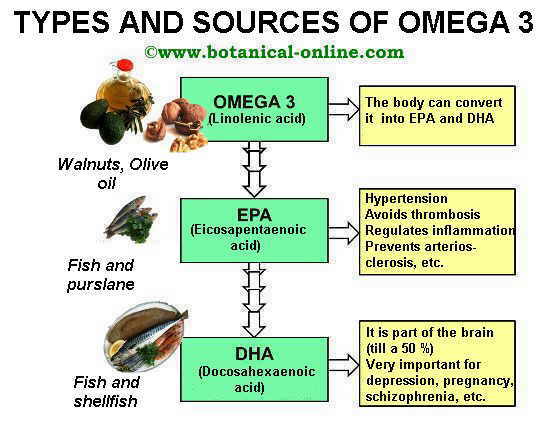Definition and causes of the obesogenic environment
What is the obesogenic environment?

The obesogenic environment can be defined as an environment where conditions favor the appearance of obesity among the population, and also its associated pathologies, which are diabetes, hypertension, high cholesterol, high triglycerides, fatty liver and arteriosclerosis. All these affectations are collected under the medical term of metabolic syndrome.
Consequences of the obesogenic environment
Before mentioning the causes and factors that influence obesity, it is interesting to see many of the consequences of the obesogenic environment, which go beyond its impact on people’s health. Some of the consequences of the obesogenic environment are:
- Sedentarism and overnutrition of industrialized populations
- Chronic diseases: They are included in what is known as metabolic syndrome (diabetes, high cholesterol, obesity, triglycerides, arteriosclerosis or poor circulation, liver disease, hypertension, …)
- Childhood obesity in disproportionate proportions, which is increasing. In many countries the cases of children with fatty liver due to obesity are beginning to appear worryingly.
- Loss of the gastronomic culture of the region, due to the entry into the daily diet of a series of products, generally fast-food, that displace native foods and traditional recipes
- Food globalization: The fact of having food from all over the world, at any time of the year, has produced a loss of knowledge of locally grown and seasonal food, in addition to the environmental impact that this entails.
- Increase in pollution of the planet, both due to food globalization, and due to the large waste of plastic packaging that this way of eating generates.
Causes of the obesogenic environment

There are many factors involved in an obesogenic environment. The most determining factor in obesity is that people live in an environment where they are continuously exposed to highly processed unhealthy foods and a stressful and sedentary lifestyle.
Factors that make up the obesogenic environment
Among the influencing factors, the following can be mentioned:
- Junk food advertising has a very lax regulation. Misleading advertising of these products is allowed.
- Incomprehensible labels. Food labels remain very difficult for the general population to understand, making beneficial food choices difficult for consumers.
- Junk food is very affordable. For both children and adults, it is possible to get junk food with a few coins and anywhere: bars, restaurants, public transport, schools or universities… In addition, you can choose from a wide variety of sweet and savory snacks .
- Junk food in hospitals. Large food companies carry the catering of hospitals, which means that these centers consume, on a regular basis: jams, pastries, juices or juices, white bread, sweetened yogurts, sausages, … There are also junk food vending machines.
- Junk food in schools. In schools and universities there is a high consumption of highly processed products, such as industrial nectars, sugary yogurts, pastries, soft drinks, chocolates, snacks, sweets, daily sausages and candies.
- Biased scientific studies. There are many interests in promoting food products, as it is an important economic sector. For example, studies on pastries with soy to lower cholesterol, or sugary soft drinks to hydrate. The diversity of information dilutes the message and confuses the population.
- Scientific societies with conflicts of interest, such as the collaboration of associations of pediatricians or nutritionists with bakery companies.
- Public health policies that are not effective or “they are late”. Obesity already has epidemic figures and is a very complex issue that must be covered from many areas. In addition, these measures arrive somewhat late, when, for example, sugary soft drinks are already ubiquitous in our society and are accepted on a social and cultural level. This indicates that more efforts should be invested in these campaigns.
Other contributing factors in the obesogenic environment
There are factors related to the way of eating and lifestyle that also play an important role in the development of the obesogenic environment, among which the following stand out:
- Type of food. There are new food products and knowledge about the ingredients has been lost (what is hidden sugar? And high fructose syrup? And aspartame? And palm oil? What are they and where do they come from “dextrose” or “maltodextrin”?…)
- Society’s lifestyle: There is no time to cook, eat, or shop. There is also no time to exercise, nor spaces dedicated to being able to exercise in the cities. All of this invites a sedentary lifestyle and eating highly processed food.
- Stress: It is an important factor because it changes the way you eat. It has been observed that, whether there is obesity or not, people increase the consumption of junk food when they are stressed, due to the sensory pleasure of eating these foods (called “comfort foods”).
- Food as a social act. In our society, food is a reason for communion and celebration. Any occasion is a good time to share food at the table with friends and family. In the same way, eating healthy or different from peers can be understood as a discriminatory act. There is also a great permissiveness with the consumption of junk food, which is not perceived as harmful if abused (“children burn it”).
What is the solution to obesity?
All people, as part of society, have a duty to educate by example:
- Choose more natural foods in the shopping cart
- Green consumer awareness: It’s not about buying certified organic, but buying locally grown and seasonal food. The consumer decides whether to buy apples 200km or 2,000km away
- Physical activity, walking to places, avoid sedentary lifestyle
- Avoid excessive consumption of highly processed food
- Avoid stress
- Protect children from aggressive advertising with nutrition education. You have to teach them that, although they give dolls with chocolate milk, or boxes of sugary cereals are very funny (aggressive advertising), they are not healthy foods.
- Demand effective public health policies against the obesogenic environment (regulation of advertising, cheaper healthy foods, etc.).
* Related information: Plant-based diet for obesity / Characteristics of obesity
![]() More information on obesity
More information on obesity







